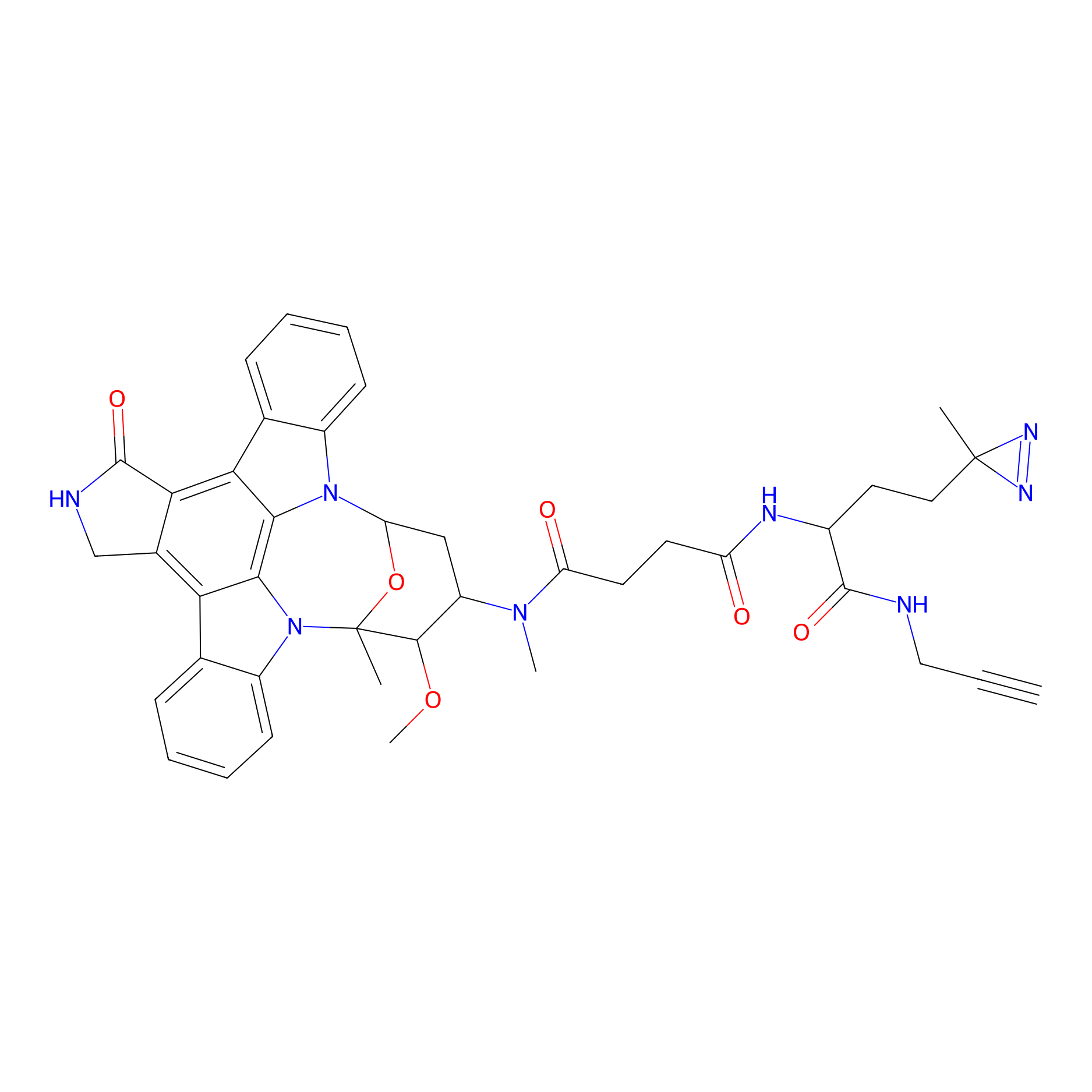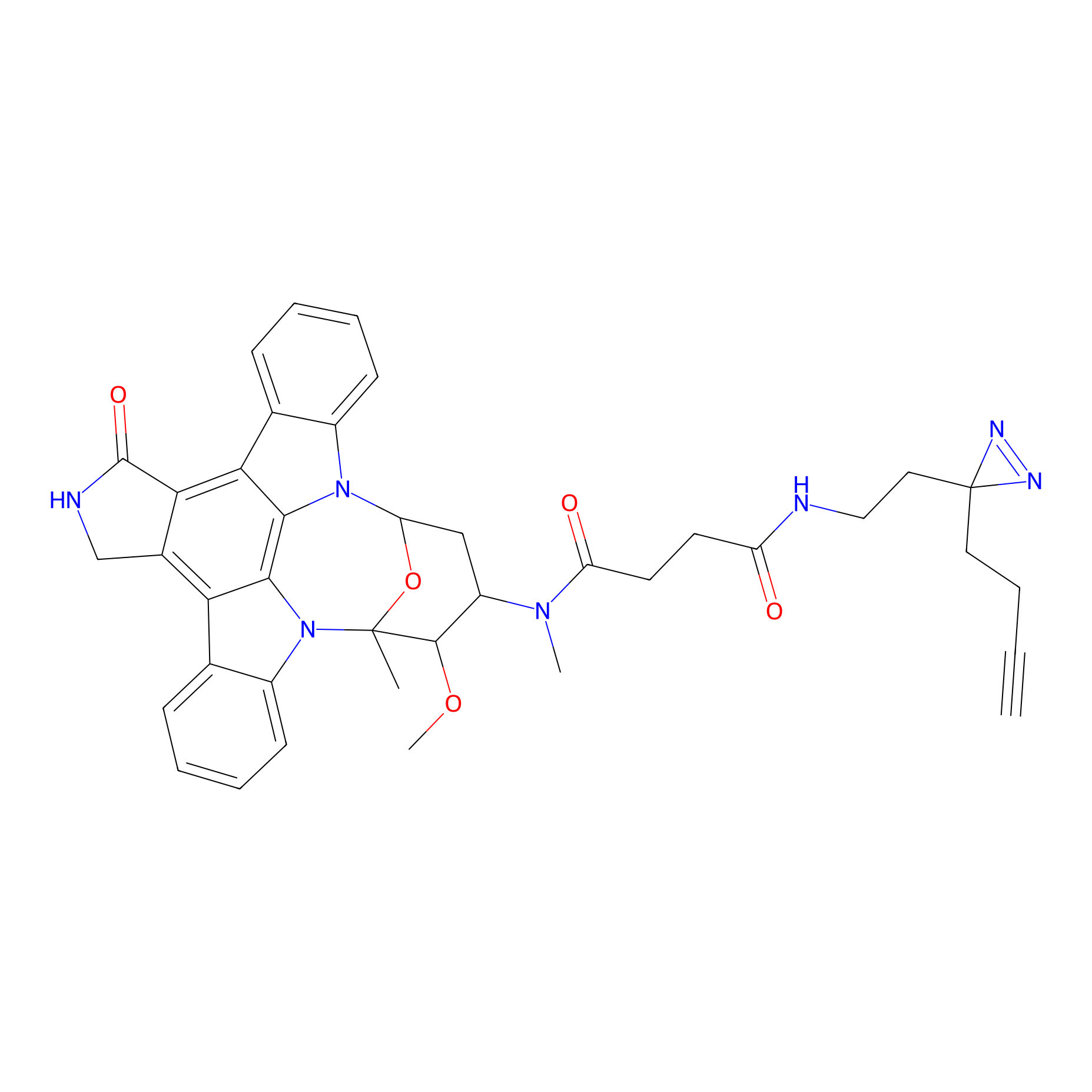Details of the Target
General Information of Target
| Target ID | LDTP00139 | |||||
|---|---|---|---|---|---|---|
| Target Name | Guanine nucleotide-binding protein G(t) subunit alpha-3 (GNAT3) | |||||
| Gene Name | GNAT3 | |||||
| Gene ID | 346562 | |||||
| Synonyms |
Guanine nucleotide-binding protein G(t) subunit alpha-3; Gustducin alpha-3 chain |
|||||
| 3D Structure | ||||||
| Sequence |
MGSGISSESKESAKRSKELEKKLQEDAERDARTVKLLLLGAGESGKSTIVKQMKIIHKNG
YSEQECMEFKAVIYSNTLQSILAIVKAMTTLGIDYVNPRSAEDQRQLYAMANTLEDGGMT PQLAEVIKRLWRDPGIQACFERASEYQLNDSAAYYLNDLDRITASGYVPNEQDVLHSRVK TTGIIETQFSFKDLHFRMFDVGGQRSERKKWIHCFEGVTCIIFCAALSAYDMVLVEDEEV NRMHESLHLFNSICNHKYFSTTSIVLFLNKKDIFQEKVTKVHLSICFPEYTGPNTFEDAG NYIKNQFLDLNLKKEDKEIYSHMTCATDTQNVKFVFDAVTDIIIKENLKDCGLF |
|||||
| Target Bioclass |
Other
|
|||||
| Family |
G-alpha family, G(i/o/t/z) subfamily
|
|||||
| Subcellular location |
Cytoplasm
|
|||||
| Function |
Guanine nucleotide-binding protein (G protein) alpha subunit playing a prominent role in bitter and sweet taste transduction as well as in umami (monosodium glutamate, monopotassium glutamate, and inosine monophosphate) taste transduction. Transduction by this alpha subunit involves coupling of specific cell-surface receptors with a cGMP-phosphodiesterase; Activation of phosphodiesterase lowers intracellular levels of cAMP and cGMP which may open a cyclic nucleotide-suppressible cation channel leading to influx of calcium, ultimately leading to release of neurotransmitter. Indeed, denatonium and strychnine induce transient reduction in cAMP and cGMP in taste tissue, whereas this decrease is inhibited by GNAT3 antibody. Gustducin heterotrimer transduces response to bitter and sweet compounds via regulation of phosphodiesterase for alpha subunit, as well as via activation of phospholipase C for beta and gamma subunits, with ultimate increase inositol trisphosphate and increase of intracellular Calcium. GNAT3 can functionally couple to taste receptors to transmit intracellular signal: receptor heterodimer TAS1R2/TAS1R3 senses sweetness and TAS1R1/TAS1R3 transduces umami taste, whereas the T2R family GPCRs act as bitter sensors. Functions also as lumenal sugar sensors in the gut to control the expression of the Na+-glucose transporter SGLT1 in response to dietaty sugar, as well as the secretion of Glucagon-like peptide-1, GLP-1 and glucose-dependent insulinotropic polypeptide, GIP. Thus, may modulate the gut capacity to absorb sugars, with implications in malabsorption syndromes and diet-related disorders including diabetes and obesity.
|
|||||
| Uniprot ID | ||||||
| Ensemble ID | ||||||
| HGNC ID | ||||||
Probe(s) Labeling This Target
ABPP Probe
| Probe name | Structure | Binding Site(Ratio) | Interaction ID | Ref | |
|---|---|---|---|---|---|
|
DBIA Probe Info |
 |
C139(2.88) | LDD3465 | [1] | |
PAL-AfBPP Probe
| Probe name | Structure | Binding Site(Ratio) | Interaction ID | Ref | |
|---|---|---|---|---|---|
|
STS-1 Probe Info |
 |
N.A. | LDD0136 | [2] | |
|
STS-2 Probe Info |
 |
N.A. | LDD0139 | [2] | |
Competitor(s) Related to This Target
References
